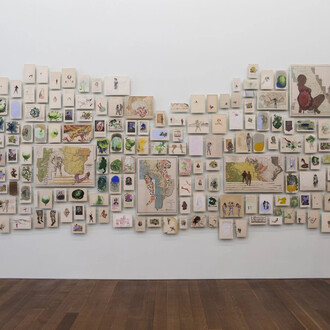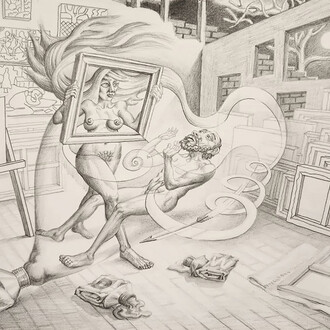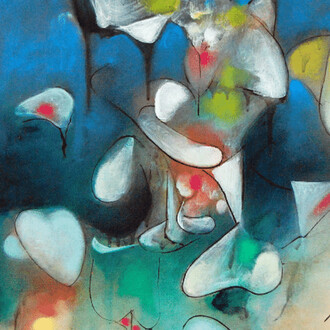For her first solo institutional exhibition, New York-based artist Jennifer Packer presents new and recent paintings. Tenderheaded brings together multiple strands in the artist’s practice, ranging from portraiture to the funerary bouquet. Based in observation, improvisation, and memory, Packer’s canvases are intimate and contemplative, rendered in loose strokes and strong color. Like the exhibition title, the juxtaposition of these various modes of representation and production point to possibilities both bodily and emotional, fragile and strong.
Packer’s figurative paintings are marked by a powerful quietude. Each canvas reads as a self-contained world, its subject emerging from or dissolving into its surroundings. She presents those who sit for her—usually family members and friends— with compassion, foregrounding their individual autonomy and carefully guarding their integrity. The artist is one of a number of emerging contemporary painters engaged with questions of representing the black subject; she considers her work to be part of a larger conversation about making these figures visible.
Funerary bouquets are the subject for another ongoing series of paintings that suggest themes of trauma and loss. Packer’s floral arrangements recall those of classical still life painters like Henri Fantin-Latour, yet, like her other works, they primarily produce a psychological space. Perhaps innocuous, even beautiful, on initial view, each suggests a private sorrow that reverberates beyond the fleeting moment of the flowers’ public display.
Packer renders fragments of her paintings in detail while she obscures information in other areas through more abstract mark-making or even leaving the surface blank. The artist paints each canvas over a long duration, returning again and again to rework the surface, “undoing” the image, as she says, until a balance is struck. A narrow palette in each work—chartreuse, mauve, ochre, for example—demands close attention to shifts in hue and tone and often results in subject and environment seeming to collapse into one another.
Packer’s practice is marked by its restraint, producing works that are complicated, sometimes elusive, but always generous. Suspicious of realism’s capacity to communicate, she recently said, “The more I approach realism, the further I feel from the true emotive quality of the things I’m depicting. I think emotional information is often housed in the image’s resistance to a fixed identity… I believe that through engaging with [this] resistance there is a pushing toward something truer, more complex, and long-lasting.”














